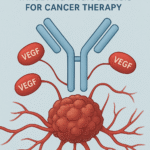-
Cataract: Causes, Pathophysiology, Risk Factors, Treatment, and Prevention
Cataract: Causes, Pathophysiology, Risk Factors, Treatment, and Prevention Cataract is one of the most common causes of visual impairment and blindness globally, particularly in aging populations. It is a condition characterized by clouding or opacity of the natural lens of the eye, which leads to progressive vision loss. Despite its high prevalence, cataract is highly…
-
Understanding Gastroesophageal Reflux Disease (GERD): Causes, Risk Factors, Pathophysiology, Treatment & Prevention
Understanding Gastroesophageal Reflux Disease (GERD): Causes, Risk Factors, Pathophysiology, Treatment & Prevention Gastroesophageal Reflux Disease (GERD) is a chronic digestive disorder that affects millions worldwide. While most people experience occasional heartburn or acid reflux, GERD refers to a more persistent and severe form of this reflux, often requiring long-term management. In this detailed guide,…
-
Disulfiram-like Reaction: Causes, Symptoms, Drugs Involved, and Clinical Importance
Disulfiram-like Reaction: Causes, Symptoms, Drugs Involved, and Clinical Importance 📝 Introduction A Disulfiram-like reaction (DLR) is a harmful response that occurs when someone consumes alcohol while taking certain medications that interfere with the normal breakdown of alcohol in the body. The term originates from the drug disulfiram (Antabuse), which was first used in the 1940s…
-
Beyond the Fever: Paracetamol’s Pharmacology and Clinical Relevance
Beyond the Fever: Paracetamol’s Pharmacology and Clinical Relevance Introduction Paracetamol, also known as acetaminophen in the United States and Canada, is one of the most widely used antipyretic and analgesic medications across the globe. Despite its extensive use and availability over the counter, its pharmacological intricacies, clinical applications, and toxicity profile are of critical importance…
-
Alzheimer’s Disease: Understanding Its Pathophysiology, Causes, Risk Factors, Treatment, and Prevention
Alzheimer’s Disease: Understanding Its Pathophysiology, Causes, Risk Factors, Treatment, and Prevention Alzheimer’s disease (AD) is a progressive neurodegenerative disorder that primarily affects memory, cognitive functions, and behavior. It is the most common cause of dementia, accounting for 60-80% of dementia cases globally. With an aging population, Alzheimer’s has become a major public health concern,…
-
Amlodipine: Pharmacology, Mechanism of Action, Therapeutic Uses, and Clinical Guidelines
Amlodipine: Pharmacology, Mechanism of Action, Therapeutic Uses, and Clinical Guidelines Introduction Amlodipine is a widely prescribed antihypertensive agent belonging to the dihydropyridine class of calcium channel blockers (CCBs). It is primarily used to manage hypertension and angina pectoris, both stable and vasospastic types. Amlodipine is renowned for its long duration of action, allowing for once-daily…
-
Cinitapride: A Comprehensive Guide to Uses, Mechanism, Pharmacology, Side Effects, and Clinical Relevance
Cinitapride: A Comprehensive Guide to Uses, Mechanism, Pharmacology, Side Effects, and Clinical Relevance Introduction Cinitapride is a gastroprokinetic and antiemetic drug widely used in the management of functional gastrointestinal disorders (FGIDs), including gastroesophageal reflux disease (GERD), functional dyspepsia, and delayed gastric emptying. Belonging to the class of substituted benzamides, cinitapride acts primarily through modulation…
-
Understanding Diagnostic Tests for Dengue: Methods, Accuracy, and Importance
Understanding Diagnostic Tests for Dengue: Methods, Accuracy, and Importance Introduction Dengue fever is a mosquito-borne viral infection that has emerged as a significant public health concern in tropical and subtropical regions across the globe. Caused by the dengue virus (DENV), which has four distinct serotypes (DENV-1 to DENV-4), the disease is transmitted primarily by the…
-
Cetirizine: A Comprehensive Overview
Cetirizine: A Comprehensive Overview Introduction Cetirizine is a second-generation antihistamine widely used to alleviate symptoms associated with allergic conditions such as hay fever, urticaria (hives), and allergic rhinitis. As a selective antagonist of peripheral H1 receptors, it offers effective relief from allergic symptoms with minimal sedative effects compared to first-generation antihistamines. This article provides an…
-
Widal Test: A Comprehensive Guide to Diagnosis of Typhoid Fever
Widal Test: A Comprehensive Guide to Diagnosis of Typhoid Fever Introduction Typhoid fever, also known as enteric fever, is a systemic infection caused primarily by the bacterium Salmonella enterica serotype Typhi. It remains a significant public health concern, especially in developing countries with inadequate sanitation and limited access to clean water. Early and accurate diagnosis…
Search
Recent Posts
- Bevacizumab Explained: Structure, Mechanism of Action, Clinical Uses, and Side Effects
- Fluconazole: Mechanism, Clinical Uses, Dosage, Side Effects, and Precautions
- Cheaper Cancer Treatment: How GST Cut on Lifesaving Medicines Brings Hope
- Montelukast: Structure, Pharmacology, Mechanism, Uses, Side Effects, and Clinical Guide
- Biopsy: A Cornerstone in Modern Medical Diagnosis
Categories
- Biochemistry
- Biostatistics
- Biotechnology
- Blog
- Chemistry
- Community Pharmacy
- Hospital Pharmacy
- Human Anatomy And Physiology
- Inorganic Chemistry
- Medicinal Chemistry
- Microbiology
- Miscellaneous
- Novel Drug delivery Systems
- Organic Chemistry
- Pathophysiology
- Pharma Updates
- Pharmaceutical Analysis
- Pharmaceutical Jurisprudence
- Pharmaceutics
- Pharmacognosy
- Pharmacology
- Pharmacy
- practice mcq
- Previous Question Papers
- Social Pharmacy
- Study Material
Archive
Tags
biochemistry bpharmacy third semester Construction free practice mcq inorganic chemistry microbiology microbiology mcq pathophysiology Pharmaceutical Engineering pharmaceutics Pharmacology pharmacy practice mcq physical pharmaceutics physical pharmaceutics 2 practice MCQ for govt pharmacist exam



